Abstract
The responding of rats was reinforced on one key after a 1-sec auditory stimulus and on a second key after a 5-sec stimulus. With errors punished by a short timeout, all subjects achieved a high level of accuracy. A chain of responses during the stimuli mediated the performance so that when the auditory signals were omitted accuracy decreased only slightly. Response-independent aversive stimulation superimposed upon this procedure both suppressed the total amount of behavior and reduced the accuracy of the discriminative performance, the intensity of the stimulus determining the error rate. The increase in errors under these conditions may have depended in part upon differential suppression of members of the response chain, but such suppression was not necessary, since error rate increased even in its absence. Furthermore, the locus of response disruption within the chain was not consistent from day to day either for any individual animal or across animals.
Full text
PDF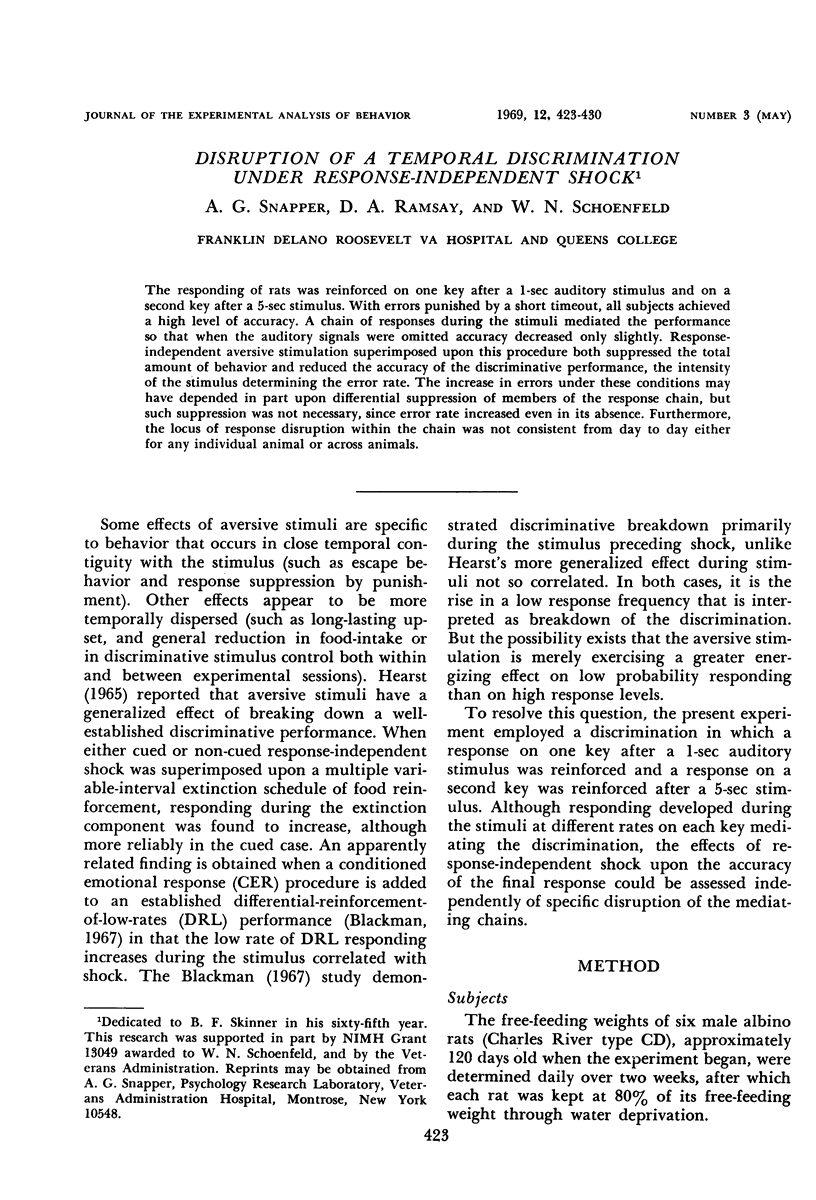
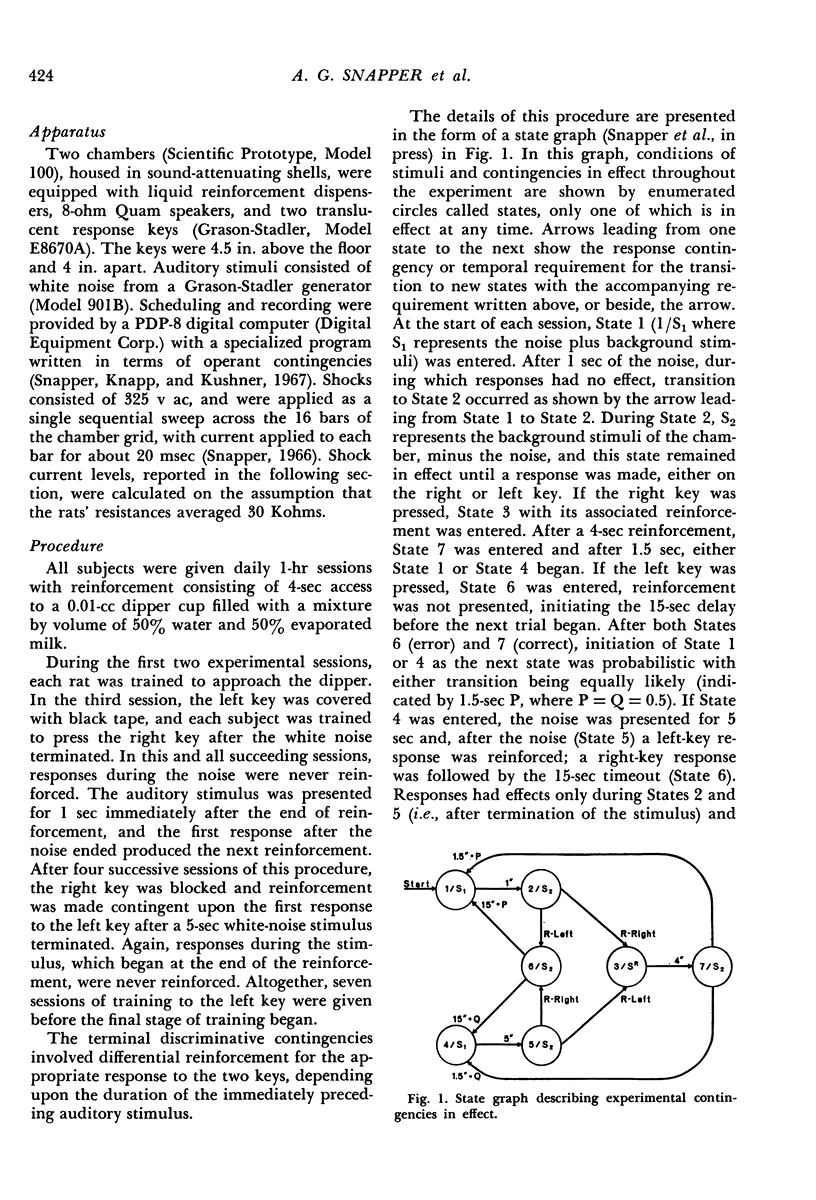
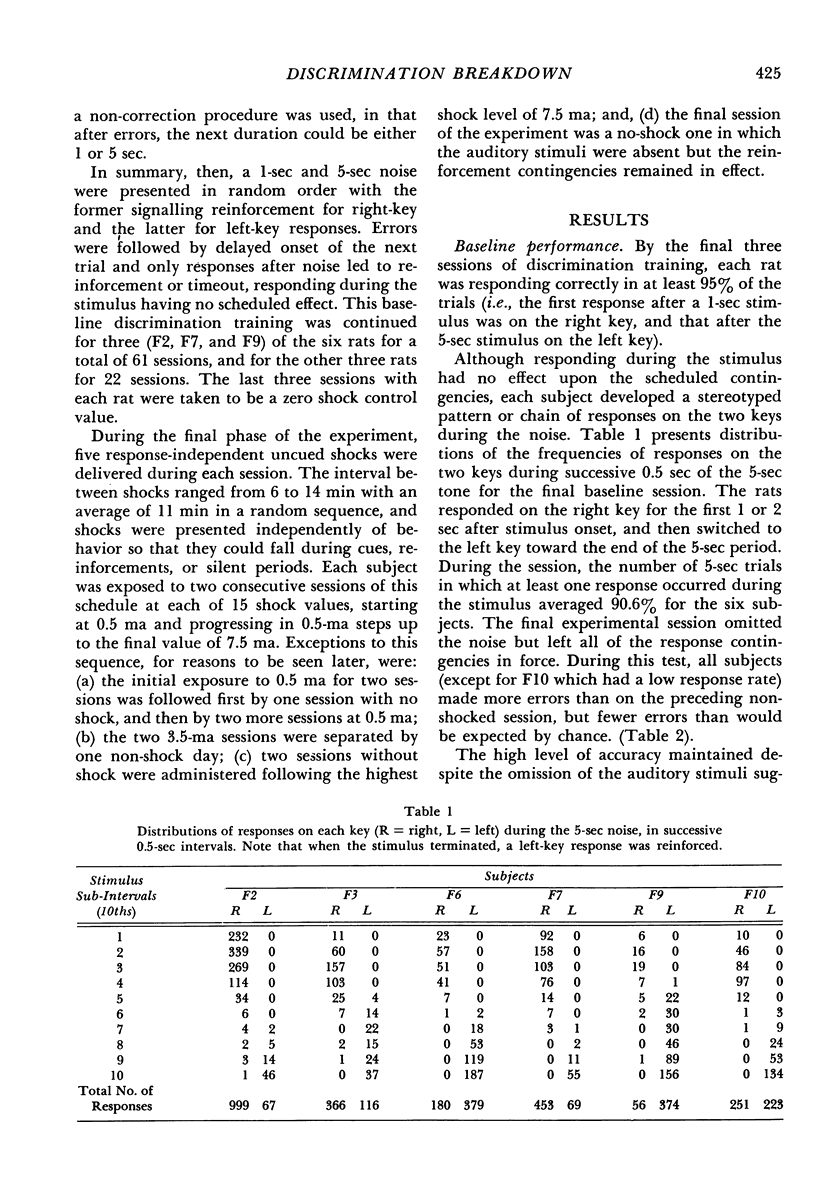
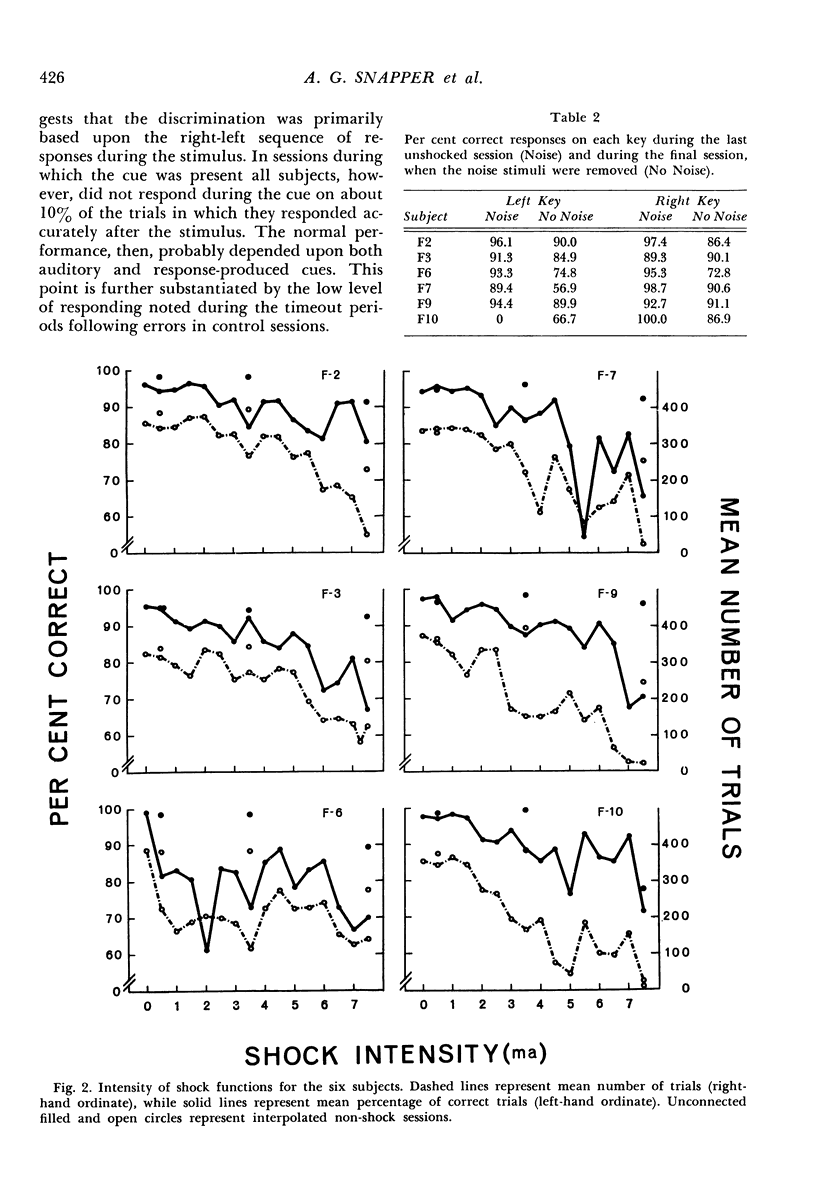
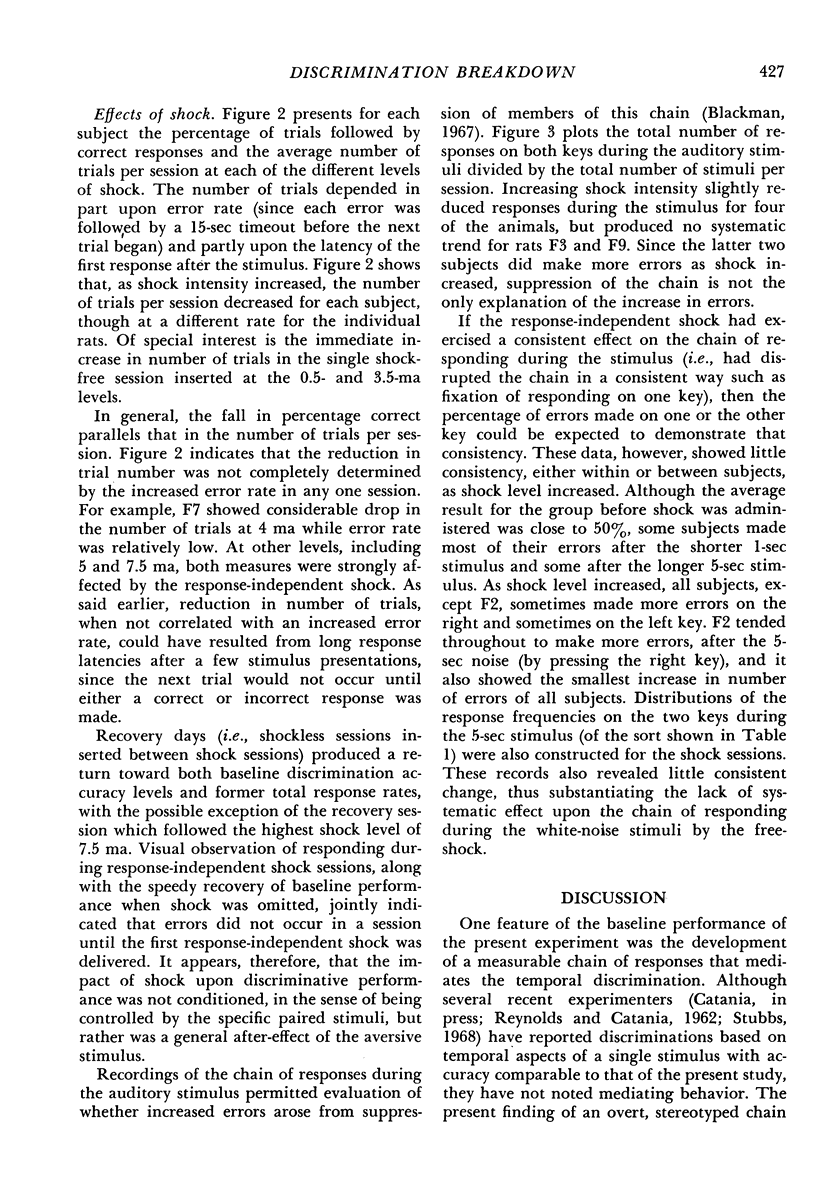
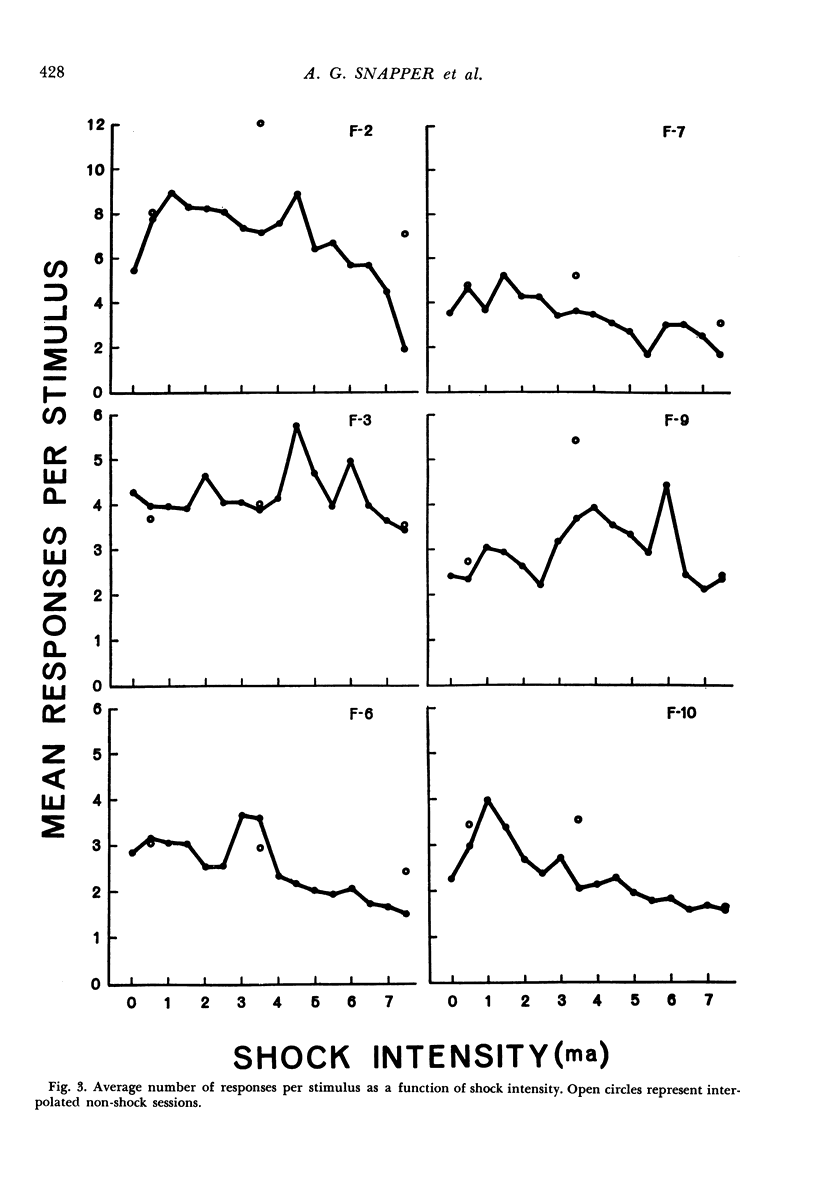

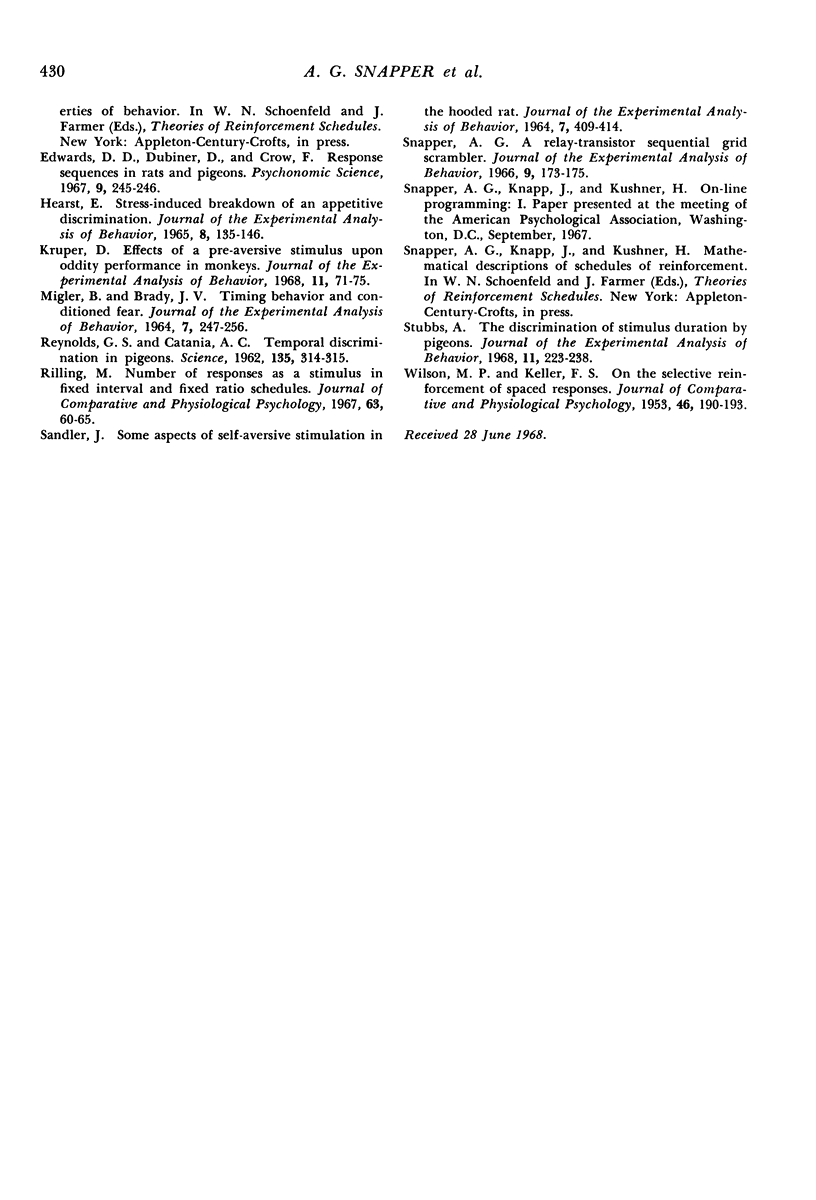
Selected References
These references are in PubMed. This may not be the complete list of references from this article.
- Blackman D. Conditioned suppression or facilitation as a function of the behavioral baseline. J Exp Anal Behav. 1968 Jan;11(1):53–61. doi: 10.1901/jeab.1968.11-53. [DOI] [PMC free article] [PubMed] [Google Scholar]
- HEARST E. STRESS-INDUCED BREAKDOWN OF AN APPETITIVE DISCRIMINATION. J Exp Anal Behav. 1965 May;8:135–146. doi: 10.1901/jeab.1965.8-135. [DOI] [PMC free article] [PubMed] [Google Scholar]
- Kruper D. C. Effects of a pre-aversive stimulus upon oddity performance in monkeys. J Exp Anal Behav. 1968 Jan;11(1):71–75. doi: 10.1901/jeab.1968.11-71. [DOI] [PMC free article] [PubMed] [Google Scholar]
- MIGLER B., BRADY J. V. TIMING BEHAVIOR AND CONDITIONED FEAR. J Exp Anal Behav. 1964 May;7:247–251. doi: 10.1901/jeab.1964.7-247. [DOI] [PMC free article] [PubMed] [Google Scholar]
- REYNOLDS G. S., CATANIA A. C. Temporal discrimination in pigeons. Science. 1962 Jan 26;135(3500):314–315. doi: 10.1126/science.135.3500.314. [DOI] [PubMed] [Google Scholar]
- Rilling M. Number of responses as a stimulus in fixed interval and fixed ratio schedules. J Comp Physiol Psychol. 1967 Feb;63(1):60–65. doi: 10.1037/h0024164. [DOI] [PubMed] [Google Scholar]
- SANDLER J. SOME ASPECTS OF SELF AVERSIVE STIMULATION IN THE HOODED RAT. J Exp Anal Behav. 1964 Nov;7:409–414. doi: 10.1901/jeab.1964.7-409. [DOI] [PMC free article] [PubMed] [Google Scholar]
- Snapper A. G. A relay-transistor sequential grid scrambler. J Exp Anal Behav. 1966 Mar;9(2):173–175. doi: 10.1901/jeab.1966.9-173. [DOI] [PMC free article] [PubMed] [Google Scholar]
- Stubbs A. The discrimination of stimulus duration by pigeons. J Exp Anal Behav. 1968 May;11(3):223–238. doi: 10.1901/jeab.1968.11-223. [DOI] [PMC free article] [PubMed] [Google Scholar]
- WILSON M. P., KELLER F. S. On the selective reinforcement of spaced responses. J Comp Physiol Psychol. 1953 Jun;46(3):190–193. doi: 10.1037/h0057705. [DOI] [PubMed] [Google Scholar]


